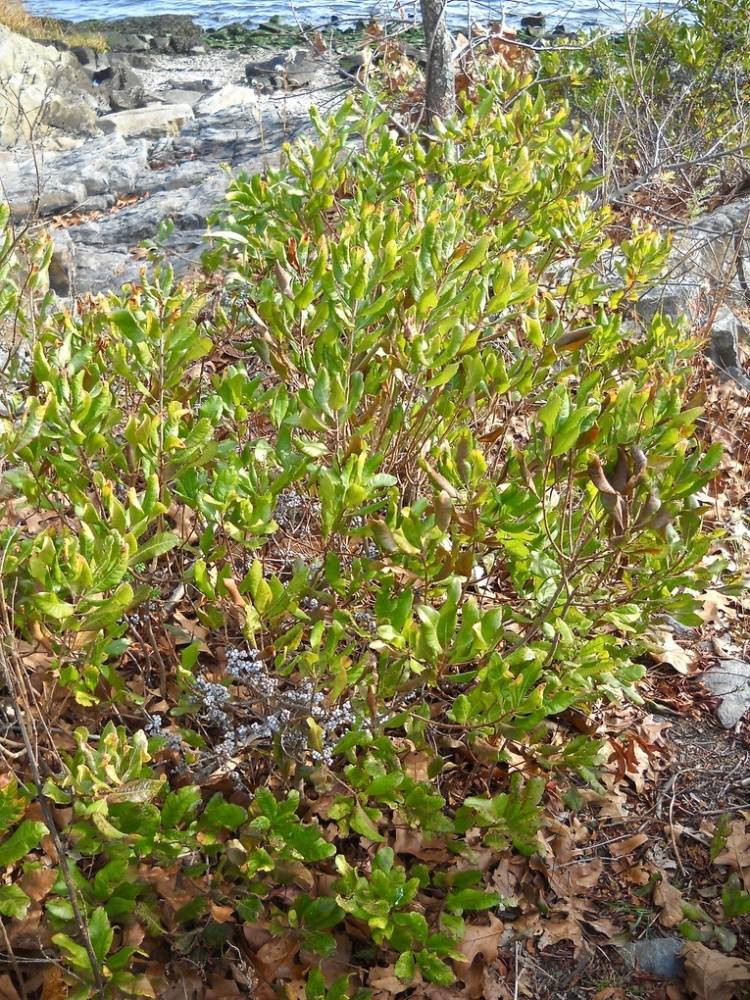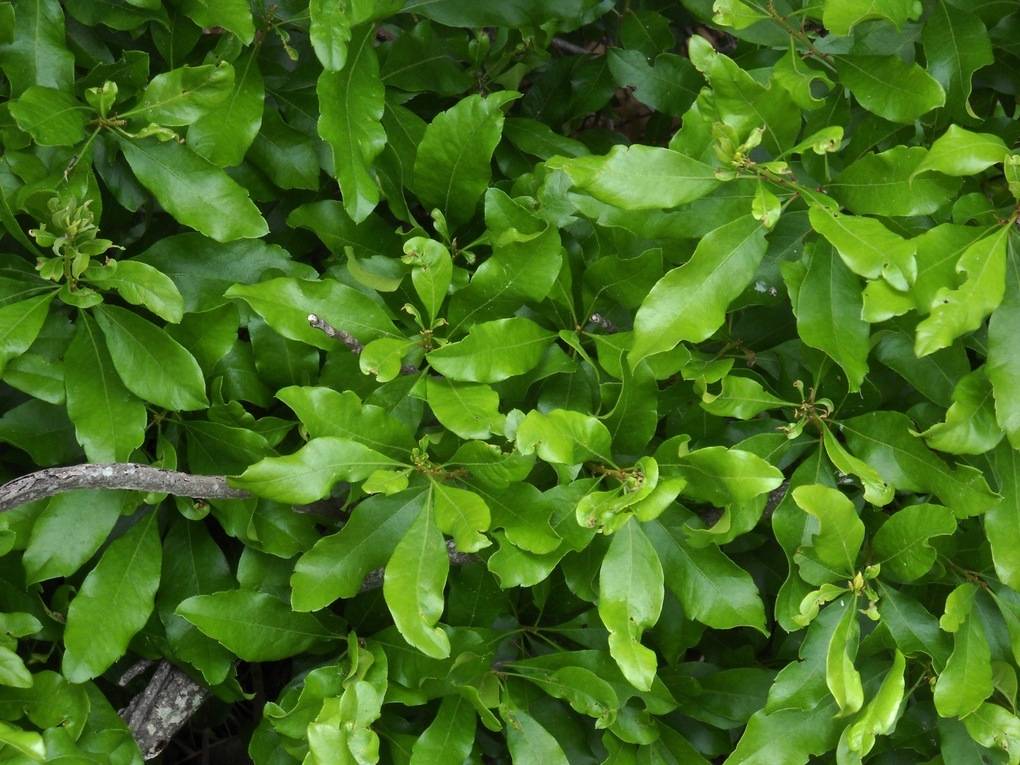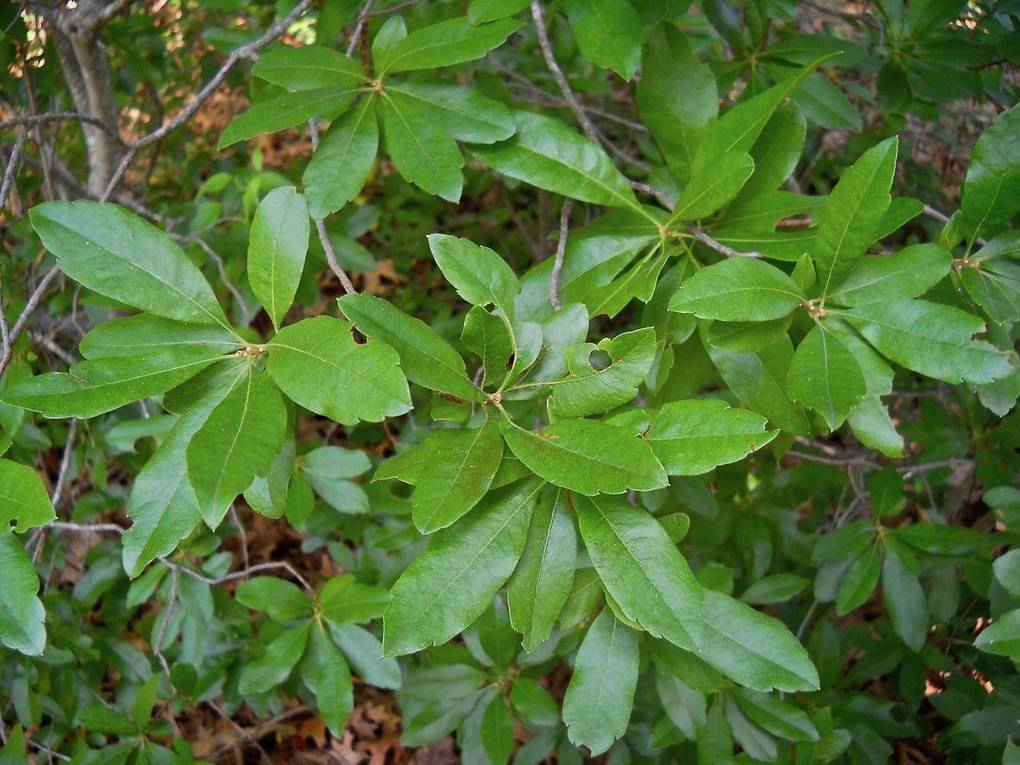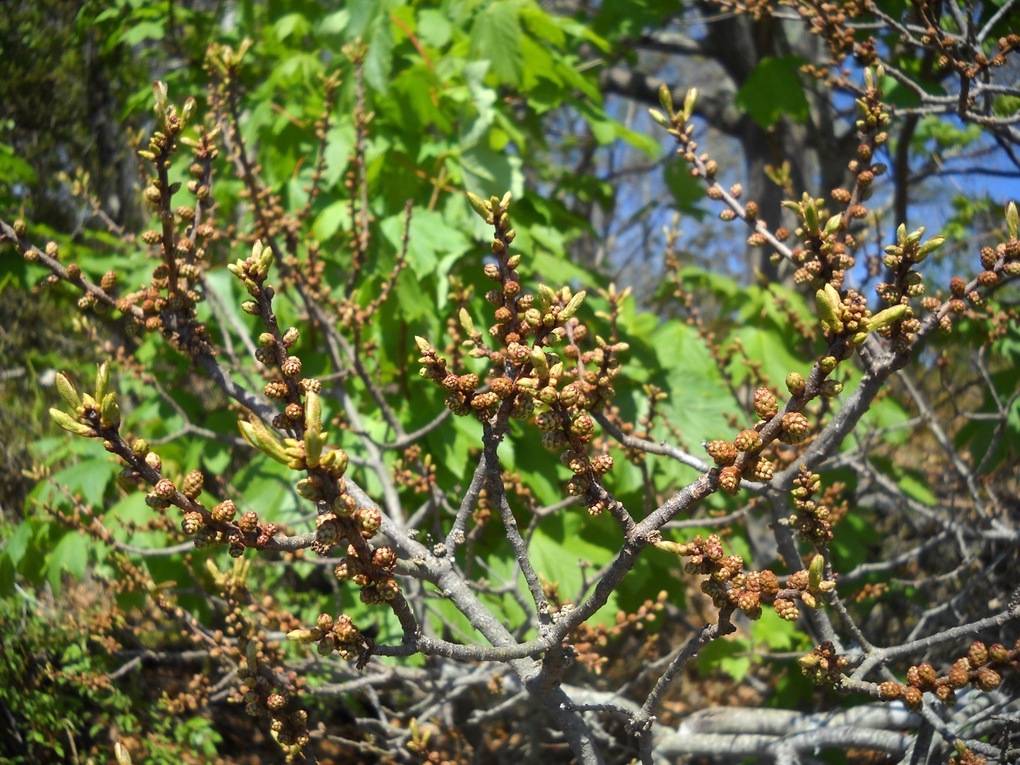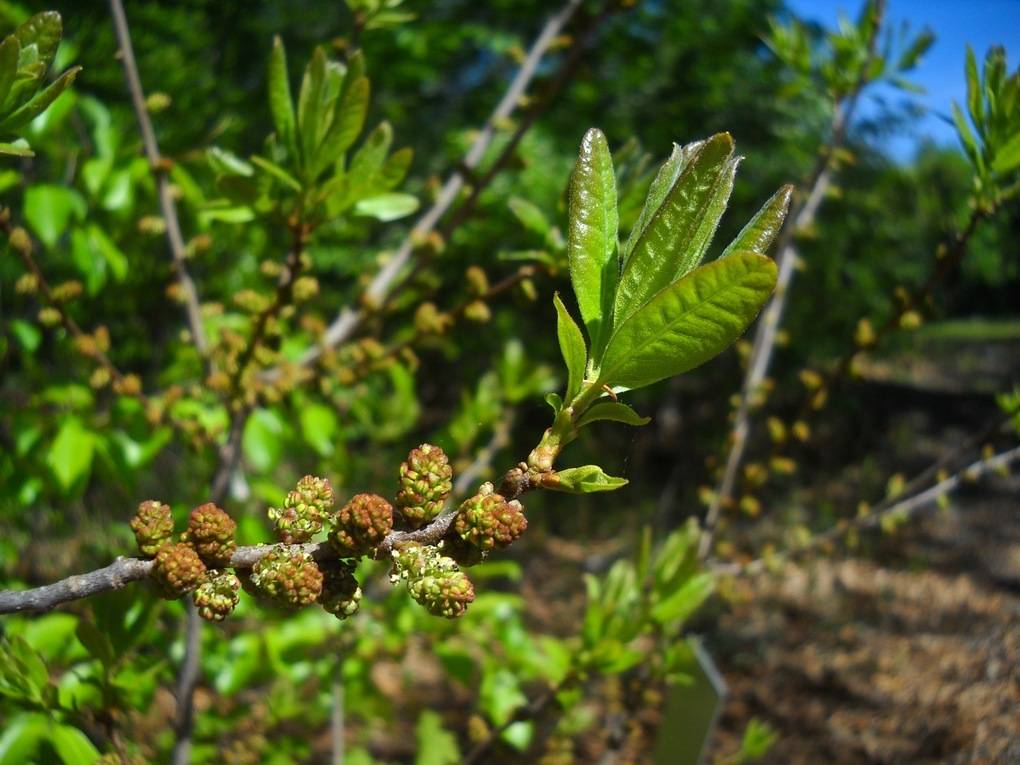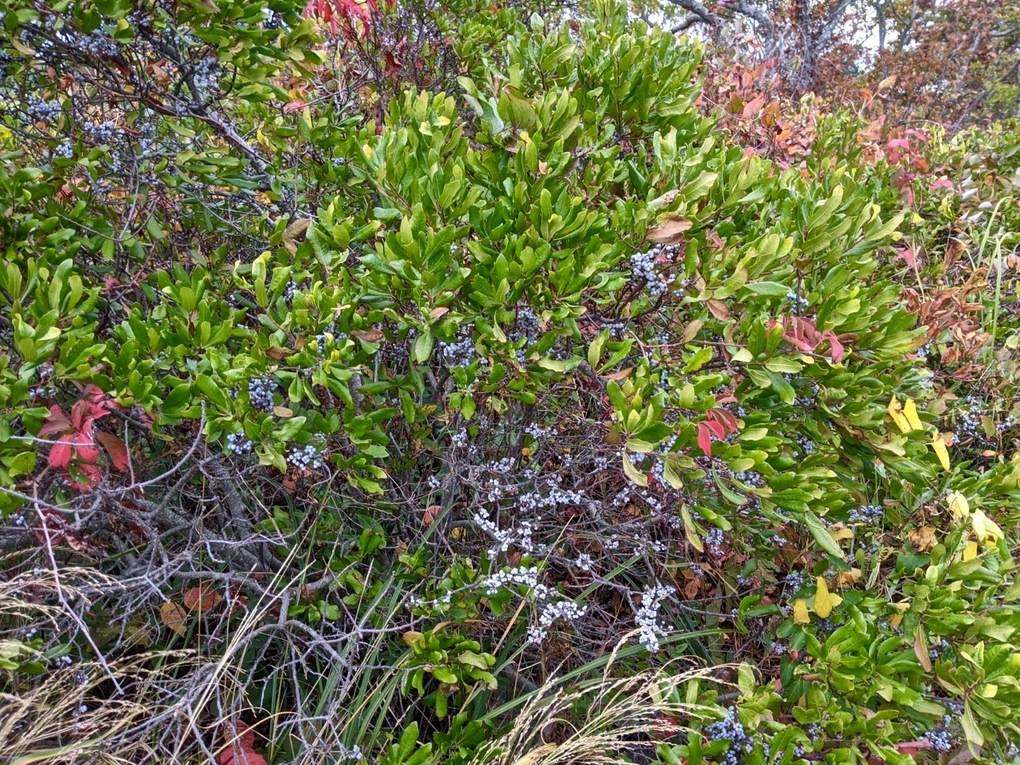small bayberry
Small bayberry is a perennial shrub native to the coast and coastal plains of eastern North America. It is able to tolerate nitrogen-poor and acidic soils because its roots contain nitrogen fixing nodules that are formed in a symbiosis with the nitrogen fixing actinobacteria Frankia sps.
At Salter Grove, it is found in the dry upland woods, along the marsh above high tide, and on the exposed rock outcrops of Rock Island. Plants growing in the shadier environment of the upland woods have larger and softer leaves. Plants that are more fully exposed to sun and wind in the latter two habitats produce narrower and leathery leaves.
It is a dioecious species which means that a given plant will have flowers with either stamens or pistils but not both. In winter, the fruits are important foods for small birds like wrens and sparrows. The mother plant also benefits because the digestive tract of birds removes the wax from the fruit which is a prerequisite for the germination of dispersed seeds.
Native Americans boiled and then used the fruits to treat fevers. American colonists used bayberry variously to treat colic, convulsions, diarrhea, dysentery, infectious diseases, palsy, and seizures. Before the advent of petroleum-based paraffin and artificial aromas, the scented leaves and wax from the fruits were processed to make bayberry candles for Christmas festivities.

